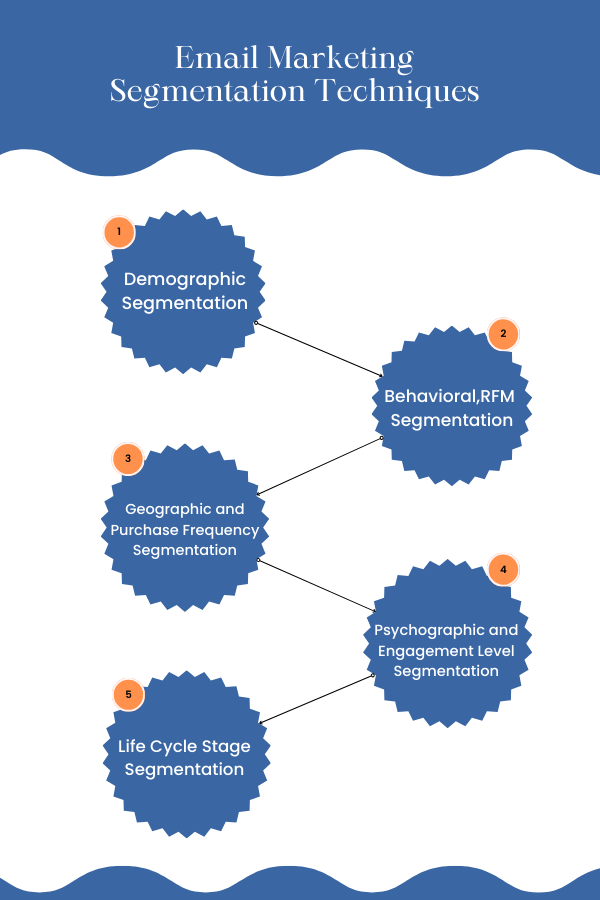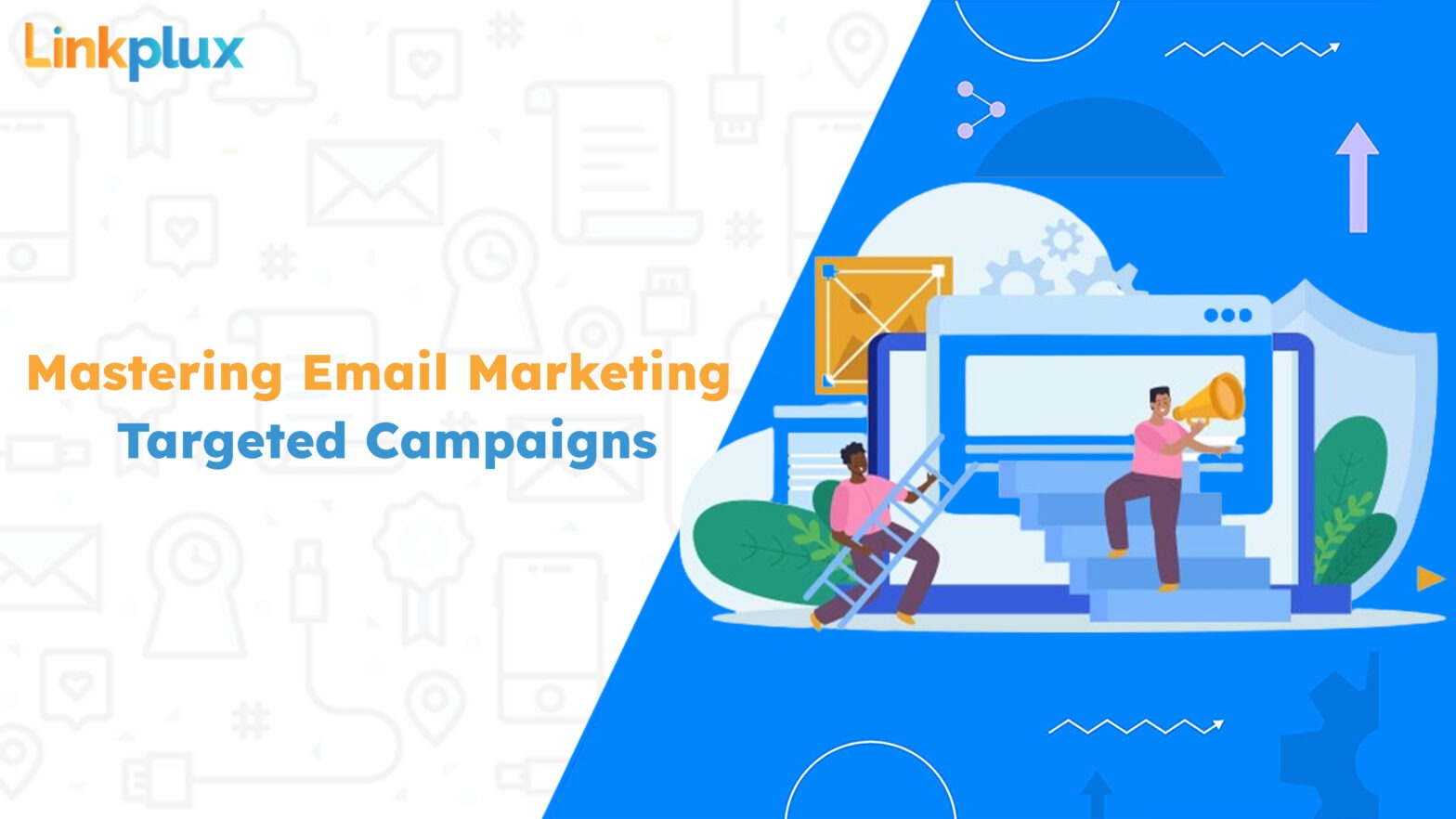Email marketing is a more effective and customized approach than traditional advertising. It uses segmentation to create a customized experience for every subscriber by utilizing their demographics and activities. Personalized content, attention-grabbing subject lines, and focused calls-to-action transform the inbox into a hallowed place where interaction is encouraged. This flexibility uses technology like automation and dynamic content to work on everything from nurturing sequences to promotional efforts. Email plays the solo part in the symphony of digital marketing, stirring feelings, fostering connections, and motivating actions with each click and conversion. In our globally networked world, it is a dynamic force that arranges significant relationships.
Email marketing segmentation
Segmenting an email subscriber list according to particular criteria entails creating separate groups for email marketing purposes. The objective is to improve overall engagement and raise the relevancy of the content by sending customized and targeted messages to various audience segments. With the use of segmentation, marketers may effectively understand and address the distinct requirements, tastes, and behaviors of different market segments. Buying patterns, geography, demographics, degree of interaction, and more are examples of common segmentation criteria. Businesses can increase the efficacy of their campaigns and get better open, click-through, and conversion rates by customizing emails for particular segments.
Audience segmentation in Email Marketing
In email marketing, audience segmentation is a critical tactic that turns basic messaging into customized experiences that connect with various demographics within a subscriber base. Marketers can create campaigns that specifically address the requirements and interests of each subscriber category by classifying customers according to their demographics, activities, and preferences. Marketing professionals may deliver highly relevant content that increases engagement and builds meaningful connections by segmenting their subscriber base based on several criteria, such as age, location, purchase history, or engagement level. By offering information that is in line with individual interests, this strategic approach not only increases the possibility that subscribers will open and interact with emails but also improves the overall performance of campaigns.
Importance of Audience segmentation
Relevance:
Marketers can provide highly relevant communications that are specifically tailored to the requirements, interests, and preferences of each segment within their audience by using segmentation. The possibility that subscribers will interact with the content and do the necessary activities is increased by this individualized approach.
Resource Allocation:
Through the concentration of efforts on high-value segments, audience segmentation enables marketers to allocate resources more effectively. The return on investment (ROI) for email marketing initiatives is maximized with this focused strategy.
Reduced Wastage:
Missed chances and resource waste might arise from sending generic or irrelevant communications to every subscriber on the list. By ensuring that each email is addressed to an appropriate target segment, audience segmentation reduces waste.
Improved measurement and analysis:
One of the main advantages of audience segmentation in email marketing is better measurement and analysis. Marketers may more efficiently evaluate and assess the success of each segment by breaking the audience up into discrete groups. As a result, they are able to learn more about subscriber behavior, preferences, and engagement patterns. Marketers can monitor important metrics like open rates, click-through rates, conversion rates, and ROI for every segment with improved measurement and analysis. This results in enhanced overall efficacy and efficiency in email marketing activities by enabling better decision-making, campaign optimization, and targeting strategy refinement over time.
Improved Conversion Rates:
Conversions are largely driven by relevance. Email subscribers are more likely to complete desired actions, like buying something, signing up for a service, or downloading a resource, when they receive emails that directly address their interests or requirements. Campaign performance is enhanced, and conversion rates rise as a result of this greater relevance.
Enhanced Customer Satisfaction:
Delivering pertinent information shows that you are aware of and respect the interests and requirements of your subscribers. Because they feel valued and involved with the content they get, subscribers may become more satisfied and loyal.
Reduced Unsubscribes and Spam Complaints:
Recipients are more likely to unsubscribe from or report spam from messages that are generic or irrelevant. Marketing professionals can lessen the possibility that subscribers would flag emails as spam or opt out of receiving future communications by providing information that is extremely relevant to each segment.
Email Marketing Segmentation Strategies
Demographic Segmentation
Segment the subscriber base according to demographic variables, including age, gender, income, occupation, education, and marital status. Customized messaging that speaks to the distinct qualities of each demographic group is made possible by this segmentation.
Behavioral Segmentation :
In email marketing, behavioral segmentation is the process of splitting apart subscribers according to their previous interactions and actions. Marketers are able to customize messaging to the interests and preferences of each segment by examining actions such as email opens, clicks, and sales. Personalized messaging, which increases engagement and conversions, is made possible by this tactic.
Geographic Segmentation
Segment subscribers by country, state, city, or zip code to better understand their geographic position. Localized messaging that is suited to the unique requirements and tastes of subscribers in various locations is made possible by geographic segmentation.
Psychographic Segmentation
Divide up your subscriber base according to their attitudes, values, lifestyle, hobbies, and personality characteristics. Marketers can develop messages that appeal to the psychological motivations and preferences of certain segments by using psychographic segmentation.
Life Cycle Stage Segmentation
Segment subscribers into groups according to their stage of the customer lifecycle: new leads, active customers, lapsed customers, and devoted supporters. Using lifecycle stage segmentation, personalized communications can be sent to subscribers at every point of the customer journey, catering to their unique requirements and concerns.
Purchase Frequency Segmentation
Divide up your subscription base into groups according to how frequently they make purchases: regular purchasers, infrequent buyers, and non-buyers. With purchase frequency segmentation, marketers may re-engage dormant subscribers and stimulate repeat purchases by sending tailored offers and promotions.
Engagement Level Segmentation
Sort subscribers into groups according to the open, click-through, and overall engagement rates from prior email campaigns. By using engagement level segmentation, marketers can target inactive subscribers with re-engagement campaigns and provide exclusive offers and incentives to highly engaged members.
RFM Segmentation
The three primary variables that are analyzed in RFM (Recency, Frequency, Monetary) segmentation are:
Marketers can find high-value segments using RFM segmentation and customize messages for them based on their purchasing patterns.

Targeted Email campaign
Crafting Personalized Messages
In a targeted email campaign, content is created with a certain segment in mind. Every component of the email, from the subject line to the body, should take the preferences and needs of the target audience into consideration.
Utilizing Dynamic Content:
When using dynamic content in email marketing, emails are customized for each recipient according to their interests, actions, or other pertinent information. Personalized experiences that speak to each receiver can be created by marketers using dynamic content instead of delivering the same static email to every subscriber. Marketers may provide more relevant and interesting information to their audience by dynamically altering aspects like product recommendations, graphics, or text based on variables like previous purchases, geographic location, or website interactions. Email campaigns are more successful when they take a tailored approach, which raises open, click-through, and conversion rates.
Maximizing Conversion Opportunity :
Motivating desired actions is the main objective of a targeted email campaign. The call to action, whether it be for a purchase, resource download, or newsletter subscription, should be tailored to the particular objectives of the intended audience.
Conclusion
The importance of audience segmentation and customized email campaigns in the dynamic field of digital marketing cannot be emphasized. You may establish a deeper connection, increase engagement, and eventually accomplish your marketing goals by getting to know your audience on a personal level and adjusting your messaging accordingly. Make use of segmentation’s power and set out to improve the effectiveness of your email marketing campaigns.
FAQ’s for Segmentation and Targeting in Email marketing :
Why is email marketing segmentation important?
Email marketers need to know how to segment their audience in order to break them up into more manageable and focused groups according to certain attributes like preferences, behaviors, or demographics. Through customized content delivery to individual segments, marketers may enhance relevance, engagement, and conversion rates. Campaign performance is improved overall when subscribers receive messages that are tailored to their needs and interests, thanks to segmentation.Which segmentation criteria are frequently applied in email marketing?
Psychographics (interests, hobbies, values), behaviors (previous purchases, internet visits, email interactions), and lifecycle stage (new leads, active customers, lapsed customers) are examples of common segmentation criteria. Marketers can develop meaningful and relevant audience segments by examining these factors, which enables more focused messages and increased campaign efficacy.
How can segmentation in email marketing make use of dynamic content?
Email communications can be personalized by marketers using dynamic content according to the traits of each segment. Through the use of dynamic elements, such as text, graphics, or product recommendations, marketers may tailor highly relevant and engaging content for each group depending on variables like prior purchases or geographic location. Email campaigns are more effective when they use a tailored approach, which boosts engagement and conversion rates.
In email marketing initiatives, what are the advantages of targeting?
Email marketers can concentrate their efforts on particular audience segments by using targeting in their campaigns, which makes their communications more pertinent and powerful. Marketers may increase open rates, click-through rates, and, eventually, conversions by providing content that speaks to each segment’s interests and preferences. Additionally, targeting aids in resource optimization and improved return on investment for email marketers.
How can email marketers assess whether segmentation and targeting are working?
By monitoring important indicators like open rates, click-through rates, conversion rates, and ROI for each category, marketers may assess the effectiveness of segmentation and targeting in email marketing. Through the examination of these data points, advertising professionals can evaluate the success of their targeting and segmentation plans and make informed choices to enhance subsequent advertising efforts. Marketers can also compare the effectiveness of various segmentation and targeting techniques using A/B testing, which allows them to gradually improve their strategy.

